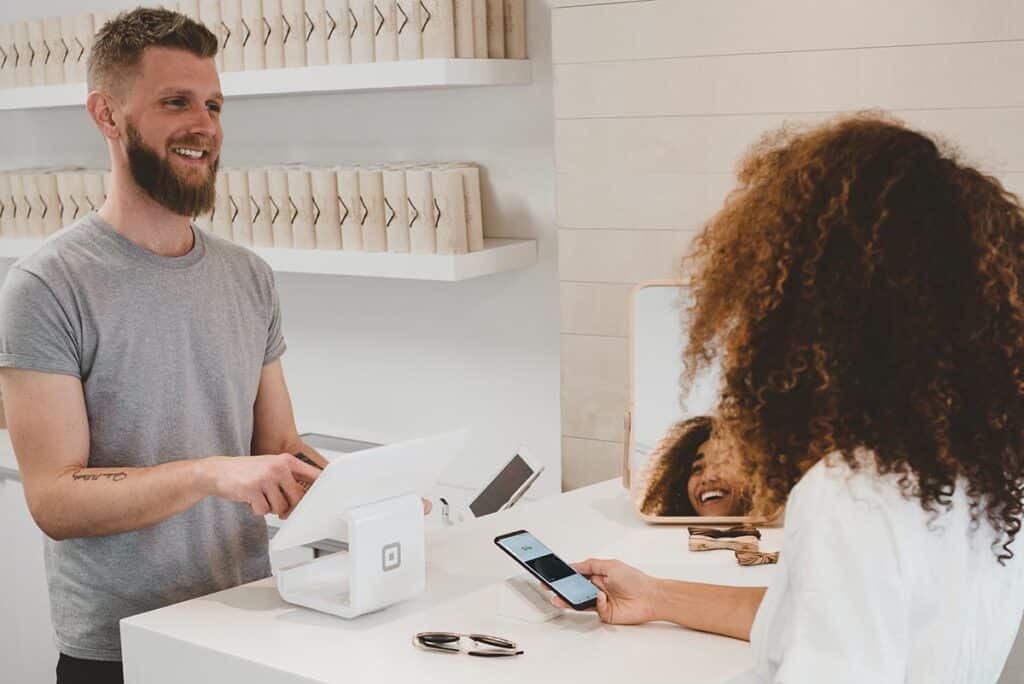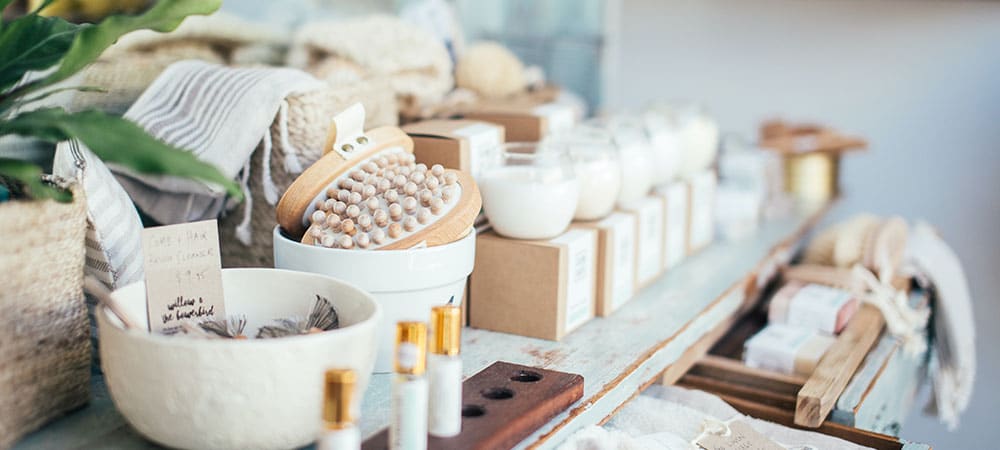As you establish your product business, you might think about selling your products wholesale and wonder how to sell wholesale as a small business.
When you sell wholesale, you sell your products at a lower price to a retailer or a third party, who then sells them directly to their customers.
Many product businesses sell directly to their customers, but depending on your circumstances, it might make sense for you to sell some, or all, of your products wholesale. This can allow you to sell more products and grow your brand quickly.
Read on to find out everything you need to know about selling your products wholesale, including what you need before you get started and where to find retailers.
How to Sell Wholesale As a Small Business: Getting Started

To get started selling wholesale, you’ll need enough product in stock to sell to retailers. That means you need the capital to manufacture a large number of products so that you can have them on hand when a retailer needs them.
It’s important to remember that your retailer might not be as passionate about selling your products as you are. You’ll need well-designed packaging to help your products stand out among others on the shelves.
Finally, you will need an organization system in place for retailers to purchase your products. This should include barcodes for your products and a catalog or line sheet that retailers can use to purchase your products, along with an order form and written terms and conditions.
How to Price for Wholesale
Selling to a retailer gives you the opportunity to sell your products in bulk and to get in front of new buyers. However, you’ll be operating on smaller profit margins than if you sell your products directly to customers.
In most cases, a good rule of thumb for setting your wholesale price is to figure out how much it costs for you to manufacture your product and multiply that by two.
For example, in the beauty industry, the wholesale price is typically 2-2.5 times the cost to manufacture your products. You would normally charge twice that if you sold directly to customers. So if you manufactured a product for $4, you would sell it for $8 or $10 to a wholesale buyer. If you were selling that same product directly to a customer, you would charge $20 or $25.
But it’s important to remember when thinking about how to sell wholesale as a small business that your wholesale pricing will depend on the typical retail price and the average profit margins within your industry.
How to Work with Retailers & Distributors
When looking for retailers and distributors to work with, it’s very important for you to make sure that they’re a good fit before approaching them. It takes a lot of persistence and follow-up to form relationships with retailers, so you don’t want to waste time with someone who isn’t a good fit.
In general, a retailer is a good fit if they have similar branding to yours, attract a similar target audience, and sell products that will complement your own.
Large retailers typically pay on a net 60, meaning they have 60 days to pay you after receiving your products. Make sure you have the capital and inventory to wait that long—you still have to run your business in the meantime!
When working with smaller retailers, you might be able to negotiate better terms. They might be willing to pay you a deposit upfront, or to pay on a net 30 instead.
You can find retailers in many places, including:
- In-person
- Trade-shows
- Showrooms
- Sales reps
- Boutique catalogs
- Social media
You can also use Range Me, a platform used by Target, Ulta, and many other retailers. You can upload your brand and product information, and the participating retailers will choose whether or not they are interested in your products. If you pay to be a premium member, you can see when retailers are looking for new products and submit your products directly to them.
Help Retailers Sell Your Products

When approaching smaller boutiques or shops in your area, a great way to differentiate yourself is to come with an appealing display plan for your products. This will help them sell your products and will make your products more appealing.
Make a simple display that won’t take up much room in their shop. Your display should match your branding and have a cohesive look.
It’s also a good idea to create a display that can be reused no matter where you need to show off your products, from trade shows to retailers to craft shows.
Prepare to Talk to Retailers
Before approaching a retailer, do your research. Make sure that you know what types of products they sell, what their brand is like, what price points they generally sell to, and who their customers are, and their process for product submission.
Be ready to sell your products. What makes them a good fit for this retailer? How do they stand out from the competition?
Come prepared with a strong and well thought out sales pitch and incentives, such as free shipping or gifts. Be creative and find a way to stand out from the other businesses they talk to.
Making the Most Out of Trade Shows
When thinking about how to sell wholesale as a small business, attending trade shows is one great way to get in front of distributors and retailers. You’ll get immediate feedback about your products, and be able to meet many retailers in person that you wouldn’t have access to otherwise.
However, trade-shows are a commitment in time and money. Most of them cost $2,000 and up to attend. You will also likely have to travel to them, and it takes a lot of work to prepare.
If you do decide to exhibit at trade shows, make sure that you are selective in choosing which ones to attend. If you can, attend a show first and then come back as an exhibitor once you’ve decided it’s a good fit.
Before you attend, make sure that you know your goals, that you come with the materials to make an appealing booth, and that you think about creating incentives for buying ahead of time. Bring a sample sheet with retail and wholesale prices to present to retailers.
Create a system for collecting information so that you are prepared to follow up afterward. Often, relationships are built in the follow-up even more than at the event, so make sure to set aside some time in the days after the trade show to follow up with the people you meet there.
Sales Reps, Distributors, and Showrooms
Another great way to start selling wholesale is to work with sales reps and distributors or to display your products in showrooms. Sales reps and distributors understand how to get in front of retailers and will save you time in working with retailers directly.
Showrooms provide a venue for you to get in front of retailers as well. However, they do take a cut of the profit. Most sales reps, distributors, and showrooms are paid a 5% to 20% commission.
You can find sales reps and distributors by searching online, meeting them at trade shows, or calling stores to ask who they work with.
Home Shopping Networks
Another avenue, when thinking about how to sell wholesale as a small business, is home shopping channels, like the Home Shopping Network, QVC, and Evine. Before trying to get your products on these channels, make sure you have enough cash and inventory. You won’t get paid for your products until 30 days after they are sold.
Keep in mind that you have to do well the first time you sell. If you get bad reviews, you won’t get a second chance. Contracts with home shopping channels are typically not negotiable when it comes to the number of items sold, the return policy, and what time they feature your products.
Cold Calling

Cold calling can feel daunting, but it’s a great way to find new business. The first step of cold calling is to call, email, or visit the store in person. If you reach someone, give them a sell sheet or catalog and an easy way to contact you.
If you don’t hear back after sending an email or leaving a message, follow up with another email or phone call.
Follow up is extremely important. Research shows that only 2% of sales are made the first time someone is contacted. In other words, you will most likely make sales by following up, and not in your first call.
Don’t assume that a lack of response means they are not interested. People are often busy and may have overlooked your message. Be persistent and only stop following up when it’s clear they’re not interested.
How to Sell Wholesale As a Small business: Experiment with What Works for You
When you are contemplating how to sell wholesale as a small business, try out different methods for getting retailers and figure out what works best for you. The more potential retailers you talk to, the more comfortable and successful you will be.
If you’re starting out with your product business and need more help on how to sell wholesale as a small business, check out our post on Choosing a Distribution Channel for Your Product next!
Crème de Mint has specialized in beauty, food and supplement packaging design for more than 15 years. Our CPG branding agency knows how to create compelling, craveworthy designs that can help your brand stand out! Book a call today to chat with us about your packaging design.



